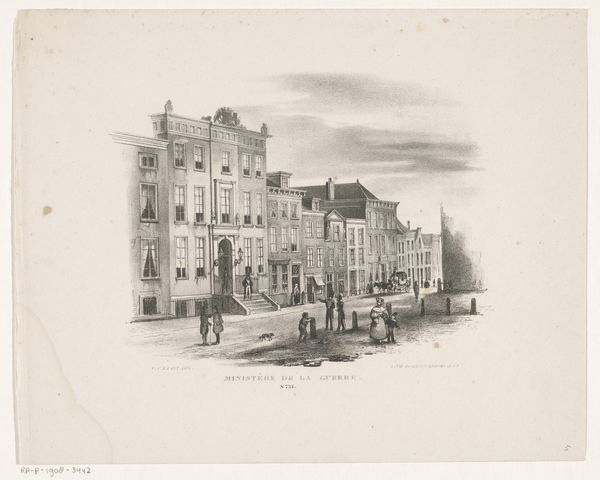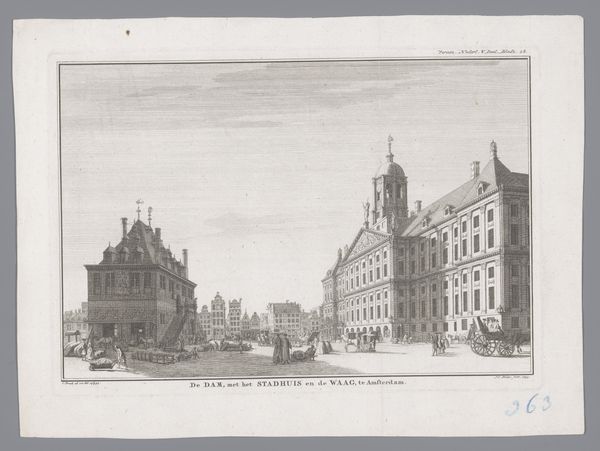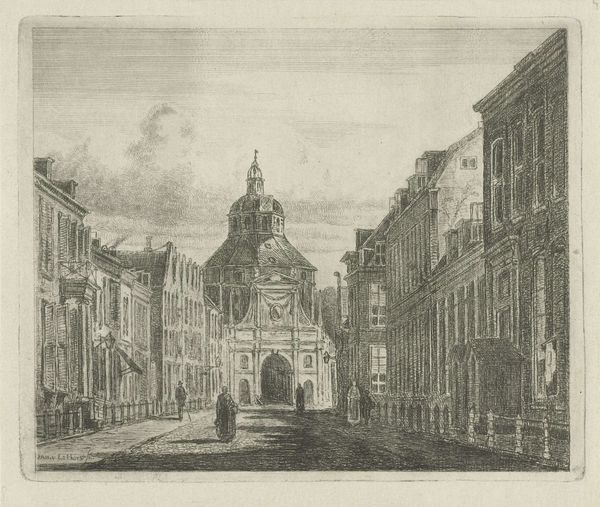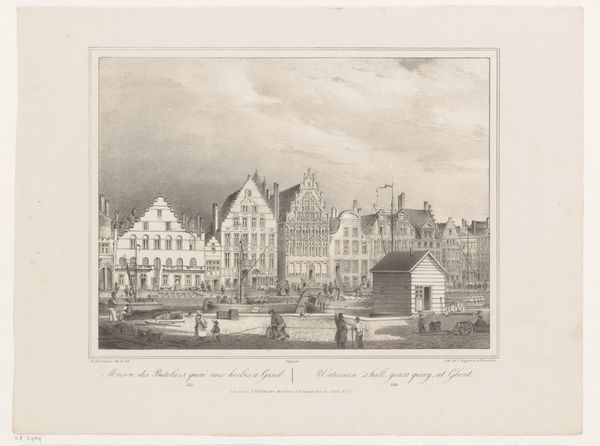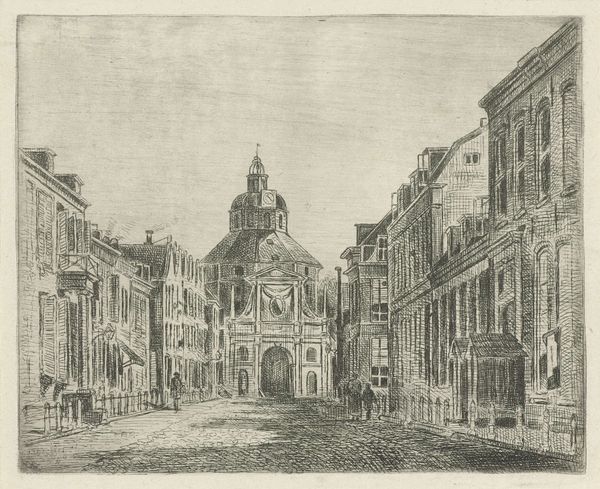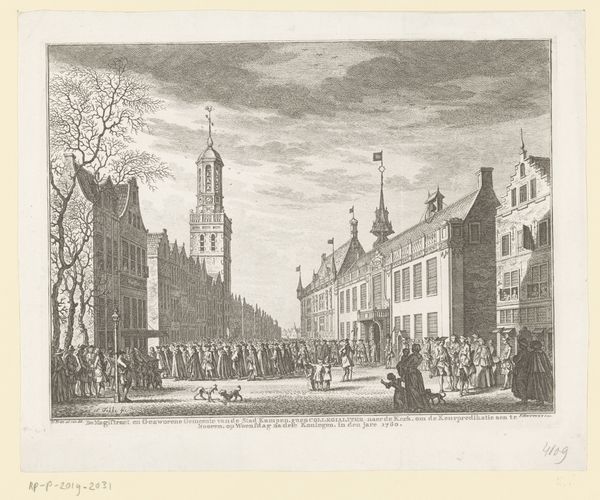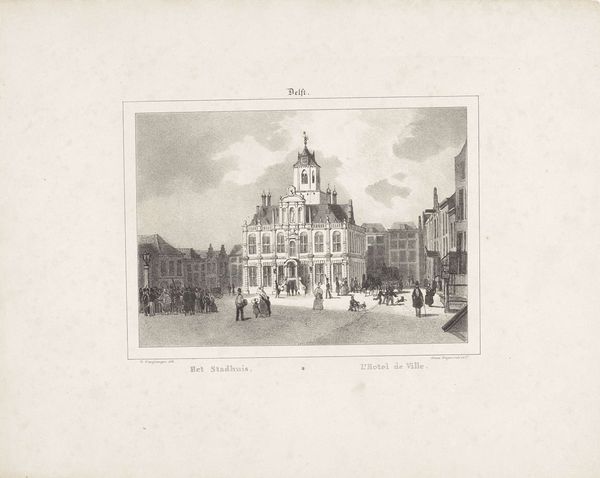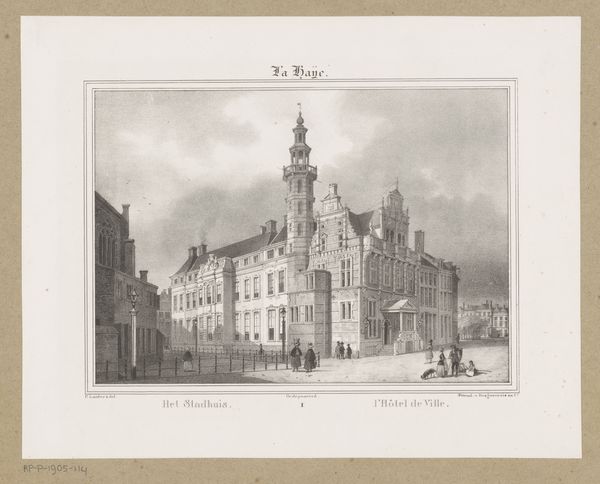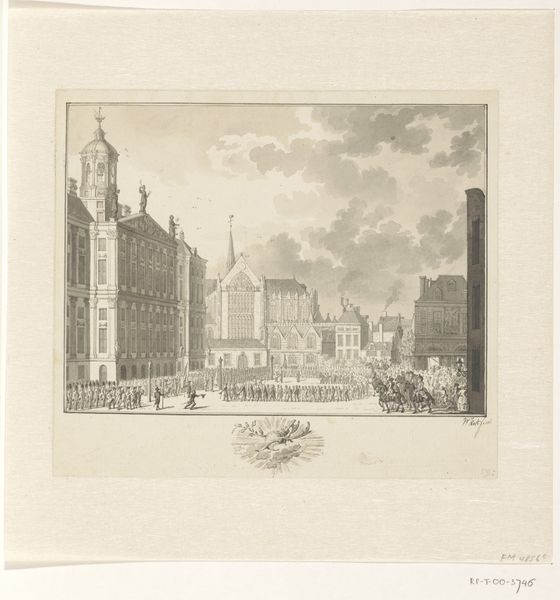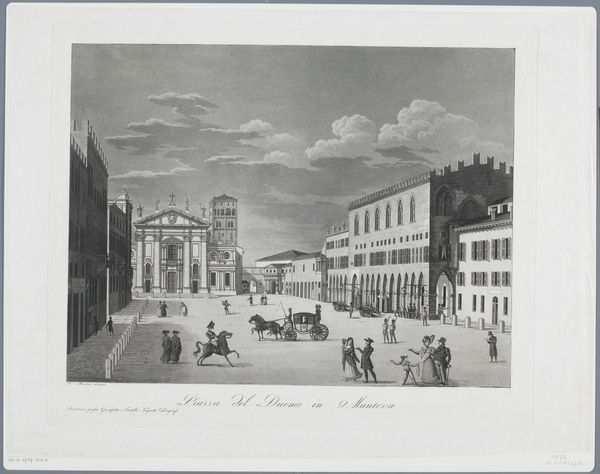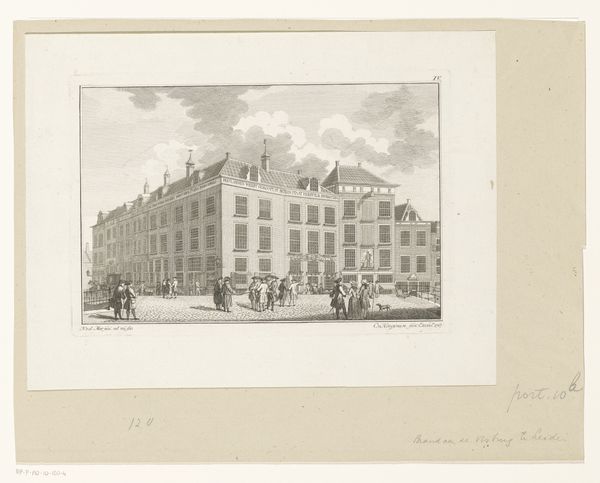
print, engraving
#
dutch-golden-age
# print
#
old engraving style
#
cityscape
#
genre-painting
#
engraving
#
realism
Dimensions: height 214 mm, width 277 mm
Copyright: Rijks Museum: Open Domain
Christiaan Lodewijk van Kesteren made this print of the Dam Square in Amsterdam. It's a lithograph, which is a printmaking technique that relies on the chemical repulsion between oil and water. The image would have begun as a drawing on a flat stone surface with a greasy crayon, allowing for a wide range of tonal variations. The stone is then treated with chemicals so that only the drawn areas attract ink. When printed, the ink adheres to these greasy areas, transferring the image onto paper. Look closely, and you’ll notice the subtle gradations of light and shadow, giving the scene a sense of depth and atmosphere. The lithographic process, though relatively new at the time, made art more accessible. It was perfect for distributing images of public places like this one, playing a vital role in shaping perceptions of urban life. By understanding the materials and processes behind this print, we gain insight into the artist’s world and the evolving landscape of 19th-century art.
Comments
No comments
Be the first to comment and join the conversation on the ultimate creative platform.
